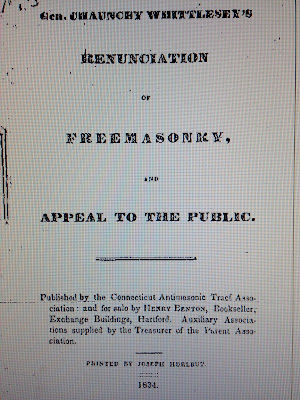I probably shouldn’t even post this—I learned of this New Jersey event just now, practically accidentally through social media, so I’m sorry for the too late notice. I believe registration was closed yesterday, although tickets seem to remain available still. I don’t know how, where, or if the lodge has publicized this at all, but here’s the word from the Morris County Tourism Bureau:
 |
| Jacob Arnold’s Tavern on Morristown Green |
The Freemasons formed their own local lodge, Cincinnati No. 3, in the early 1800s. Many of the most prominent residents throughout the town’s history have been members. Here’s a chance to tour their building (c. 1931) on Maple Avenue with Masons and view the displays and artifacts in their onsite museum and library which opened in 2015.
If you’ve ever wanted to learn more about the “secret society” of the Masons, here’s your opportunity.
Saturday, July 23 at 1 p.m. The tour will be held at 39 Maple Avenue, Morristown. Tour size is limited to 30. Cost: $15. Metered parking is available on adjoining side streets.
The Summer 2016 Historical Walking Tour Series from the Morris County Tourism Bureau is being generously sponsored by AAA Northeast and Whole Foods Market, Morristown.
The Morris County Tourism Bureau is a Destination Marketing Organization that positively affects the economy of Morris County by promoting the area’s exceptional historic, cultural, and recreational opportunities by providing services to residents, business travelers, and tourists.















































































